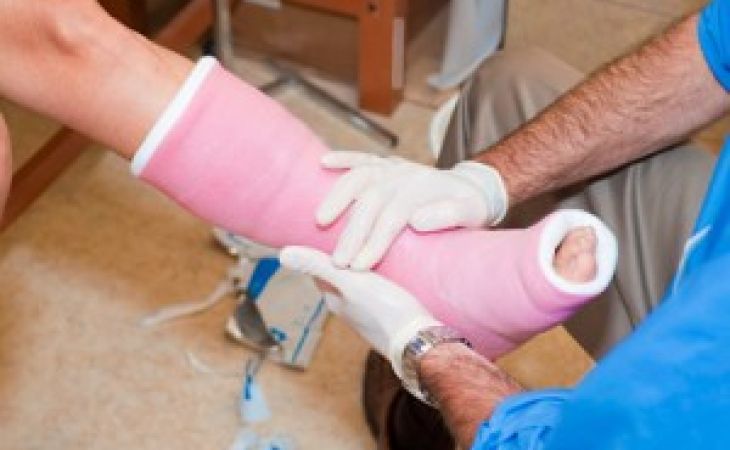
Fractures
Fractured means broken. Whether you have a complete or a partial fracture, you have a broken bone. A bone may be completely fractured or partially fractured in any number of ways (cross-wise, lengthwise, in the middle).
Fractures can happen in a variety of ways, but there are three common causes:
-
Trauma accounts for most fractures. For example, a fall, a motor vehicle accident or a tackle during a football game can all result in a fracture.
-
Osteoporosis also can contribute to fractures. Osteoporosis is a bone disease that results in the “thinning” of the bone. The bones become fragile and easily broken.
-
Overuse sometimes results in stress fractures. These are common among athletes.
Diagnosing fractures
Usually, you will know immediately if you’ve broken a bone. You may hear a snap or cracking sound. The area around the fracture will be tender and swollen. A limb may be deformed, or a part of the bone may puncture through the skin. Doctors usually use an X-ray to verify the diagnosis. Stress fractures are more difficult to diagnose, because they may not immediately appear on an X-ray. However, there may be pain, tenderness and mild swelling.
Types of fractures
-
Closed or simple fracture. The bone is broken, but the skin is not lacerated.
-
Open or compound fracture. The skin may be pierced by the bone or by a blow that breaks the skin at the time of the fracture. The bone may or may not be visible in the wound.
Particular types of fractures are:
-
Transverse fracture. The fracture is at right angles to the long axis of the bone.
-
Greenstick fracture. Fracture on one side of the bone, causing a bend on the other side of the bone.
-
Comminuted fracture. A fracture that results in three or more bone fragments.
The healing process
As soon as a fracture occurs, the body acts to protect the injured area, forming a protective blood clot and callus or fibrous tissue. New “threads” of bone cells start to grow on both sides of the fracture line. These threads grow toward each other. The fracture is closed and the callus is absorbed.
Treatment for fractures
Doctors use casts, splints, pins or other devices to hold a fracture in the correct position while the bone is healing.
-
External fixation methods include plaster and fiberglass casts, cast-braces, splints and other devices.
-
Internal fixation methods hold the broken pieces of bone in proper position with metal plates, pins, or screws while the bone is healing.
Recovery and rehabilitation
Fractures take several weeks to several months to heal, depending the extent of the injury and how well you follow your doctor’s advice. Pain usually stops long before the fracture is solid enough to handle the stresses of normal activity.
Even after your cast or brace is removed, you may need to continue limiting your activity until the bone is solid enough to use in normal activity. Usually, by the time the bone is strong enough, the muscles, for instance in your leg or arm, will be weak because they haven’t been used. Your ligaments may feel “stiff” from not using them. You’ll need a period of rehabilitation that involves exercises and gradually increasing activity before those tissues will perform their functions normally, and the healing process is complete.
Quick Contacts
Please feel free to contact us for any inquiry
- Emergency call : +91 94274 18181
- Email : contact@trishahospital.com
- Location: Trisha multispeciality hospital, Ahmedabad



